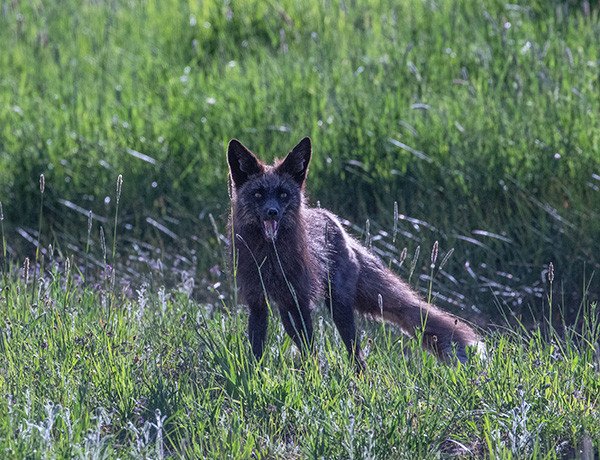ODFW seeks summer volunteers with ‘strong legs, good attitude’ to help survey Sierra Nevada red foxes in the Cascades

Hiking upward of 15 miles a day to check remote cameras
SALEM, Ore. (KTVZ) – As part of a collaborative project between the Oregon Department of Fish and Wildlife and Washington State University-Pullman, wildlife biologists need volunteers this summer to assist with surveying Sierra Nevada red foxes in the Central Oregon Cascade Range.
You can sign up to volunteer on this project by visiting https://odfwvolunteer.wufoo.com/forms/odfw-volunteer-registration-level-0-all-ages and select "Red Fox Tracking in Oregon Cascades - Support Role" on page 2 of the registration form.
Project staff and volunteers will use game cameras to document where Sierra Nevada red foxes live on the Deschutes and Willamette National Forests.
"Getting into areas that Sierra Nevada red foxes inhabit takes strong legs and a good attitude," said Marwa Mahmoud, WSU graduate researcher and project leader. "We can hike upward of 15 miles a day, carrying camera equipment and sometimes staying overnight in the backcountry, and we would love to have some enthusiastic recreationists help out on the project."
Volunteers will help check cameras in remote areas and will need to be competent hikers. There will also be an opportunity to do some wildlife tracking on the way; picking up potential Sierra Nevada red fox scats.
Fecal samples, or scats, contain genetic information that is left behind by the animal. These samples can be used to answer questions about what an animal is eating, how healthy it is, or how it competes for resources with other co-occurring mesocarnivores like coyotes. Scientists can answer these questions without needing to trap, handle, or capture animals.
Historically, SNRF were found in alpine, subalpine, and montane environments of California and Oregon. Red fox populations in Oregon are not federally listed, though they are an Oregon Conservation Strategy Species, and have experienced a decline over the past century characterized by smaller populations and a more fragmented distribution.
"These secretive carnivores are notoriously elusive and difficult to document," said Kaly Adkins, ODFW regional wildlife conservation biologist. "It is extremely exciting to have funding to support a widespread search effort and comprehensive analysis, and there's a lot of suitable montane fox habitat in Oregon that we'd like to survey. The more help we can get from interested volunteers to help us cover the extensive habitat the better," Adkins added.
If you'd like to help search for foxes on your own time, you can still participate in this project by sharing any observations of Sierra Nevada Red Fox through ODFW's community science portal on iNaturalist. Instructions for submitting observations can be found at this link.
To learn more about how wildlife managers are working together to conserve this species, check out the Sierra Nevada Red Fox Conservation Advisory Team's Conservation Strategy for this species (SCAT 2022).
This project is funded in part by a Wildlife and Sport Fish Restoration Grant administered by the USFWS and by the Oregon Conservation and Recreation Fund.